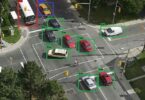In recent years, technology has become an integral part of K-12 classrooms, transforming the way students learn and teachers instruct. From interactive whiteboards to personalized learning platforms, educational institutions are embracing technology to enhance educational experiences. However, this increased integration of technology brings with it a heightened cybersecurity threat, requiring districts to prioritize the protection of student information and essential data. In this article, we will explore the growing importance of cybersecurity in K-12 classrooms and provide valuable tips for districts to ensure the safety of their students and their digital assets.
The Evolution of Technology in K-12 Classrooms
Technology has revolutionized the traditional classroom, fostering a more interactive and engaging learning environment. Here, we will briefly explore some of the key technological advancements shaping K-12 education today:
- Interactive Whiteboards: Replacing traditional chalkboards, interactive whiteboards enable teachers to deliver dynamic lessons, engage students with multimedia content, and facilitate collaborative learning.
- Mobile Devices: Tablets and laptops have become powerful educational tools, providing access to digital textbooks, educational apps, and interactive learning platforms. These devices promote personalized learning and allow students to explore concepts at their own pace.
- Online Learning Platforms: Learning management systems and online platforms enable teachers to deliver virtual lessons, track student progress, and provide personalized feedback. These platforms have become especially important during remote learning periods.
The Growing Cybersecurity Threat
As K-12 classrooms embrace technology, they become potential targets for cyber threats. Districts must recognize the risks associated with this integration and take proactive measures to safeguard student information and essential data. The following are some key cybersecurity threats prevalent in K-12 classrooms:
- Data Breaches: Student information, such as names, addresses, and academic records, is a valuable target for cybercriminals. Data breaches can lead to identity theft, fraud, and other serious consequences.
- Ransomware Attacks: Ransomware is malicious software that encrypts essential data, rendering it inaccessible until a ransom is paid. Educational institutions have become prime targets for such attacks, as they often lack robust security measures.
- Phishing Scams: Phishing emails and websites trick users into revealing sensitive information, such as login credentials or financial details. Students, teachers, and administrators should be educated on identifying and avoiding phishing attempts.
Strategies for Ensuring Cybersecurity in K-12 Classrooms
To combat the increasing cybersecurity threats, districts must adopt comprehensive strategies to protect student information and essential data. The following tips will help educational institutions establish robust cybersecurity measures:
- Shift to Managed SD-WAN Providers: In the pursuit of comprehensive cybersecurity in K-12 classrooms, districts should consider the advantages of partnering with a managed SD WAN provider (Software-Defined Wide Area Network). SD-WAN offers numerous benefits, including increased network security and simplified management.
- Invest in Cybersecurity Infrastructure: Districts should allocate resources to implement advanced firewalls, secure servers, and network monitoring tools. Regular security assessments and vulnerability testing should be conducted to identify and address potential weaknesses.
- Provide Cybersecurity Training: Educate students, teachers, and staff on best practices for online safety. Training sessions should cover topics such as creating strong passwords, identifying phishing attempts, and practicing responsible digital citizenship.
- Implement Data Encryption: Encrypting sensitive data ensures that even if it is intercepted, it remains unreadable and unusable to unauthorized individuals. Districts should prioritize the encryption of student records, financial data, and any other confidential information.
- Regularly Update Software: Outdated software is a common entry point for cyber attacks. Districts should enforce regular updates for operating systems, applications, and antivirus software to mitigate vulnerabilities and ensure the latest security patches are applied.
- Enforce Strong Password Policies: Encourage the use of complex passwords and implement multi-factor authentication (MFA) for accessing sensitive data. Regular password changes should be enforced, and password managers can help users maintain unique and secure passwords.
- Develop an Incident Response Plan: Create a comprehensive incident response plan to outline the steps to be taken in the event of a cybersecurity breach. This plan should include protocols for identifying, containing, and mitigating the impact of an attack.
- Foster a Culture of Cybersecurity: Emphasize the importance of cybersecurity at all levels of the educational institution. Promote a culture of vigilance and encourage reporting of any suspicious activities or potential security breaches.
The integration of technology in K-12 classrooms has the potential to revolutionize education. However, with this integration comes an increased cybersecurity threat that educational institutions must address. By implementing robust cybersecurity measures, providing comprehensive training, and fostering a culture of vigilance, districts can safeguard student information and essential data, ensuring a secure and promising future for K-12 education. Together, let’s embrace the benefits of technology while remaining steadfast in our commitment to protecting our digital assets and our students’ privacy.







